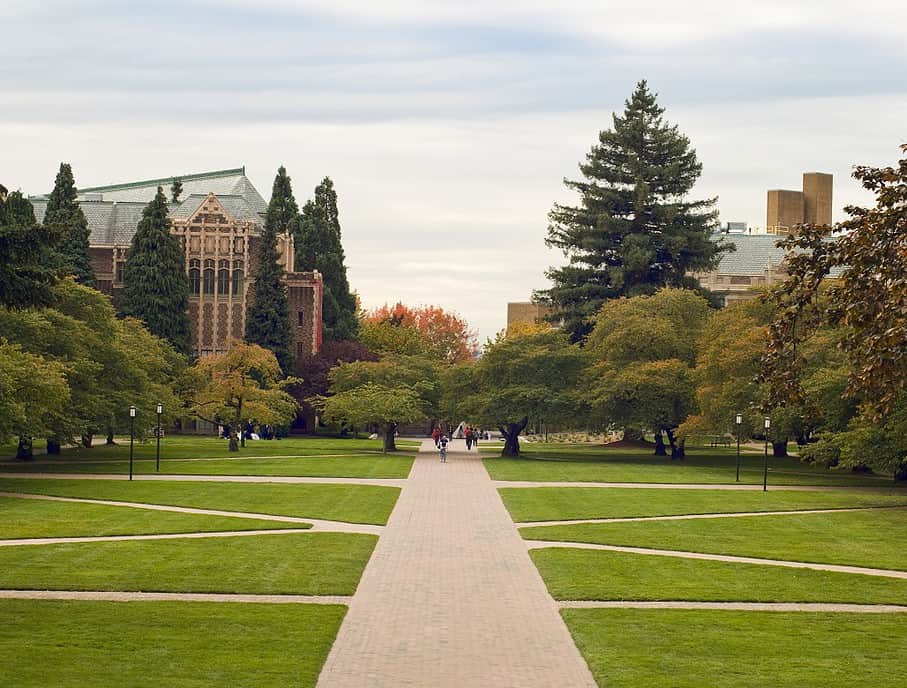Although there is not an explicit “right” or “wrong” way to choose schools for your college list, there are still best practices you can follow as you decide where you will apply. Overall, a well-balanced college list is one that will provide you enough diverse options to allow you to make the best next step for your future. Review these tips to craft your balanced college list.
Compare These Four College Qualities
To find a good fit for your college career, consider these four important qualities: academics, campus culture, accessibility, and affordability.
- Academics. College is often the first step on a successful career path. As such, it’s important to compare colleges that offer programs of study for your field of interest. If you are not quite sure of your future career, find colleges that allow you to take courses in subjects that interest you most, giving you opportunities to explore many different academic areas. Be sure to also consider student-to-faculty ratio to have an idea of your class sizes and whether it’ll be effortless to be “more than a number” to your professors. If you do have your heart set on a major, then also research the size of your major’s graduation class to better understand the program’s dynamics.
- Campus culture. Finding a college that is a good “campus culture” fit refers to the social environment of the school and the factors that influence that. Questions to consider include: Would you prefer a city school or a college in a rural area? Does a small college or a large university appeal to you? What activities and programs are offered on campus, such as sports, music, theater, Greek life, religious organizations, or journalism? Is there a campus events council (or something similar) to promote social events? In addition to reviewing these questions during your college research, make time to visit college campuses. A campus visit is key to getting the feel of an institution and allows you the chance to speak with current students about their college experience.
- Accessibility. Your college list should include schools that you’re pretty sure will accept you (probable schools), those that may accept you, but might not (target schools), and those that will be a challenge to get into (reach schools). You can check admitted student profiles on college websites to determine your probable, target, and reach schools. Ensure that you have at least 2-3 probable schools on your list that you’d be excited to attend. The more selective the college, the more difficult it is to predict admittance. For guidance in this category, school counselors and college planning tools such as MEFA Pathway can provide helpful information about admissibility at different colleges.
- Affordability. It’s very important to consider the affordability of a college. Make sure you have colleges on your list that span a range of prices and ensure that at least 1-2 of your probable schools are ones that you know your family can afford regardless of the financial aid you receive. Check out the tools listed in the following section to compare costs and estimate financial aid packages.
College Comparison Tools
Here is a quick rundown of some tools available and what they can tell you.
- College Navigator, a resource provided by the federal government, is a great place to start your college search. You can search for colleges sorted by type (e.g. 2-year, 4-year, private, public), location, degree level, and even major. Under each college is listed a wide range of information including cost, class and faculty size, campus safety measures, available athletics, and much more.
- College Scorecard is another federal tool that was developed to help families with the college search process. The focus of the College Scorecard is to empower families to make the best financial investment they can when selecting a college. The main points of focus allow families to see the average cost of a particular college after financial aid has been granted, how well a college does at graduating the students that enroll, and what the average student earns 10 years after enrolling in that college. All of these are crucial factors when determining if a particular college will provide a good return for the tuition paid.
- Net Price Calculators are available on every college’s website, and the U.S. Department of Education also offers a calculator on their site. The tool allows a prospective student or family to get an estimate as to how much financial aid they could receive at the college in question and the remaining bill after financial aid is included. The information collected in the tool will be used to calculate the student’s estimated financial aid. Your actual financial aid and net cost will depend on each school’s resources and enrollment goals in the year in which you apply.
As you build your college list, keep an open mind and allow yourself many different choices. Do your research and visit various colleges to expand your options. There are so many wonderful programs at colleges—small and large, near and far, city-based and in the country—there is a good match for everyone!











